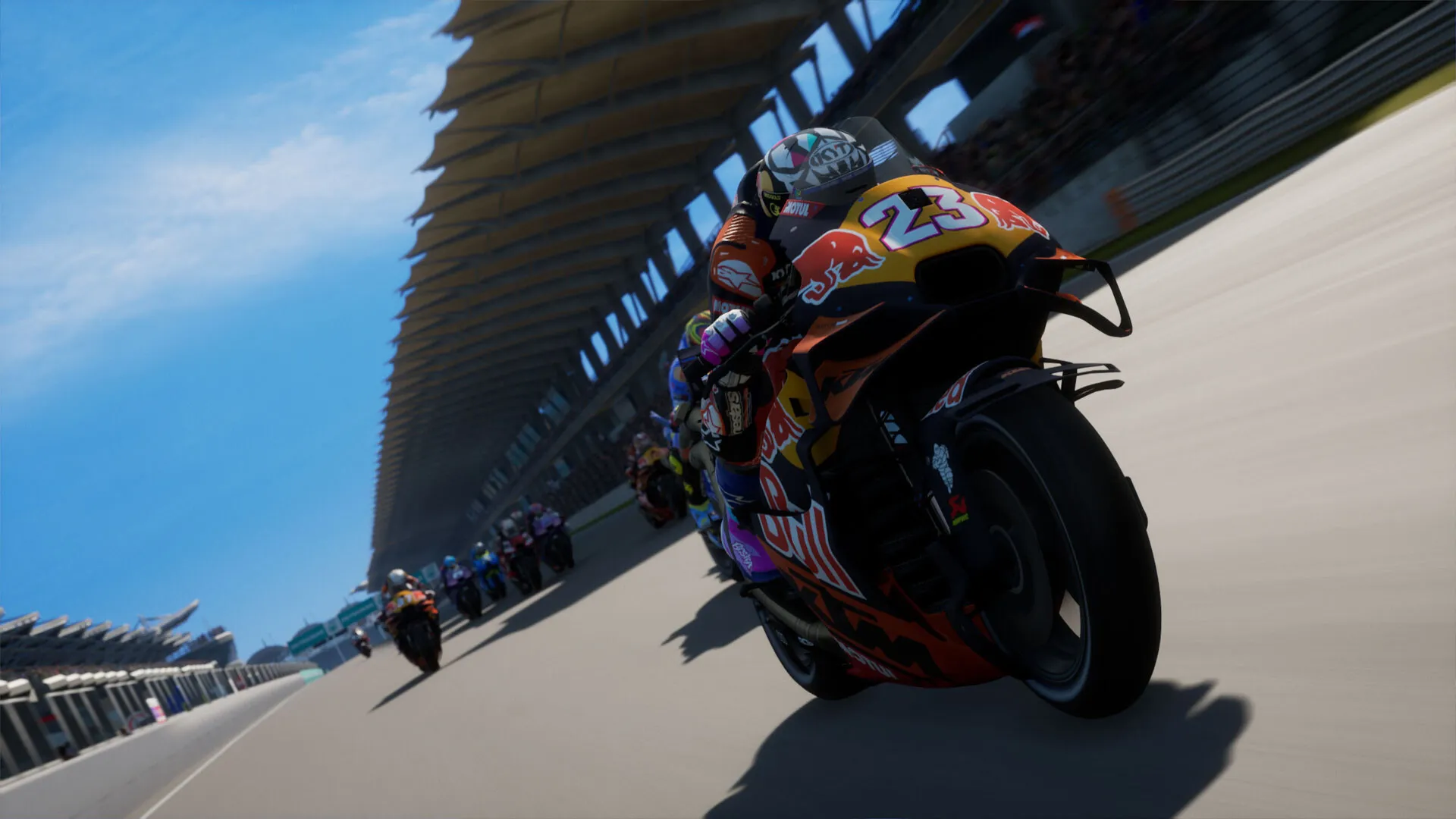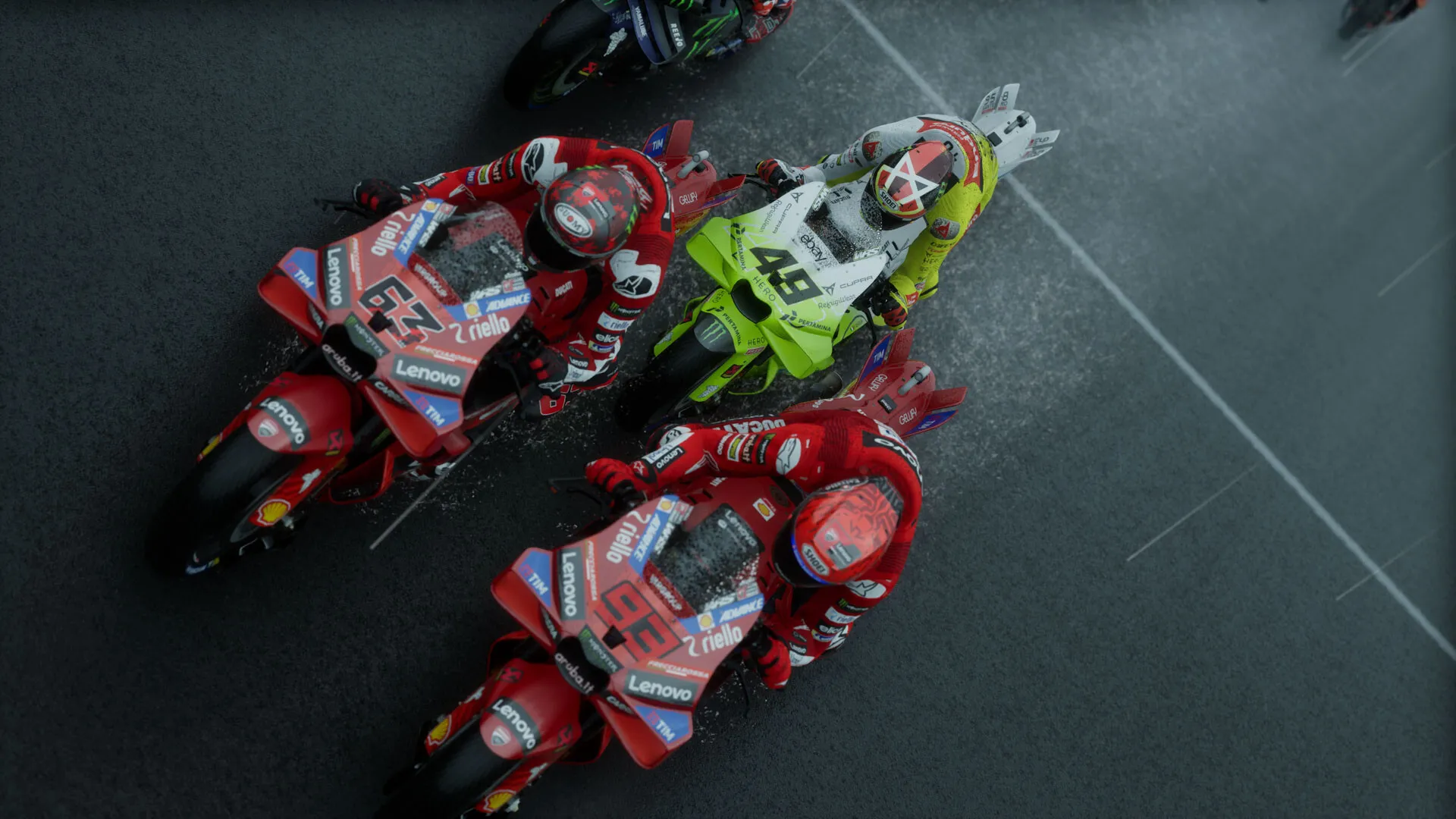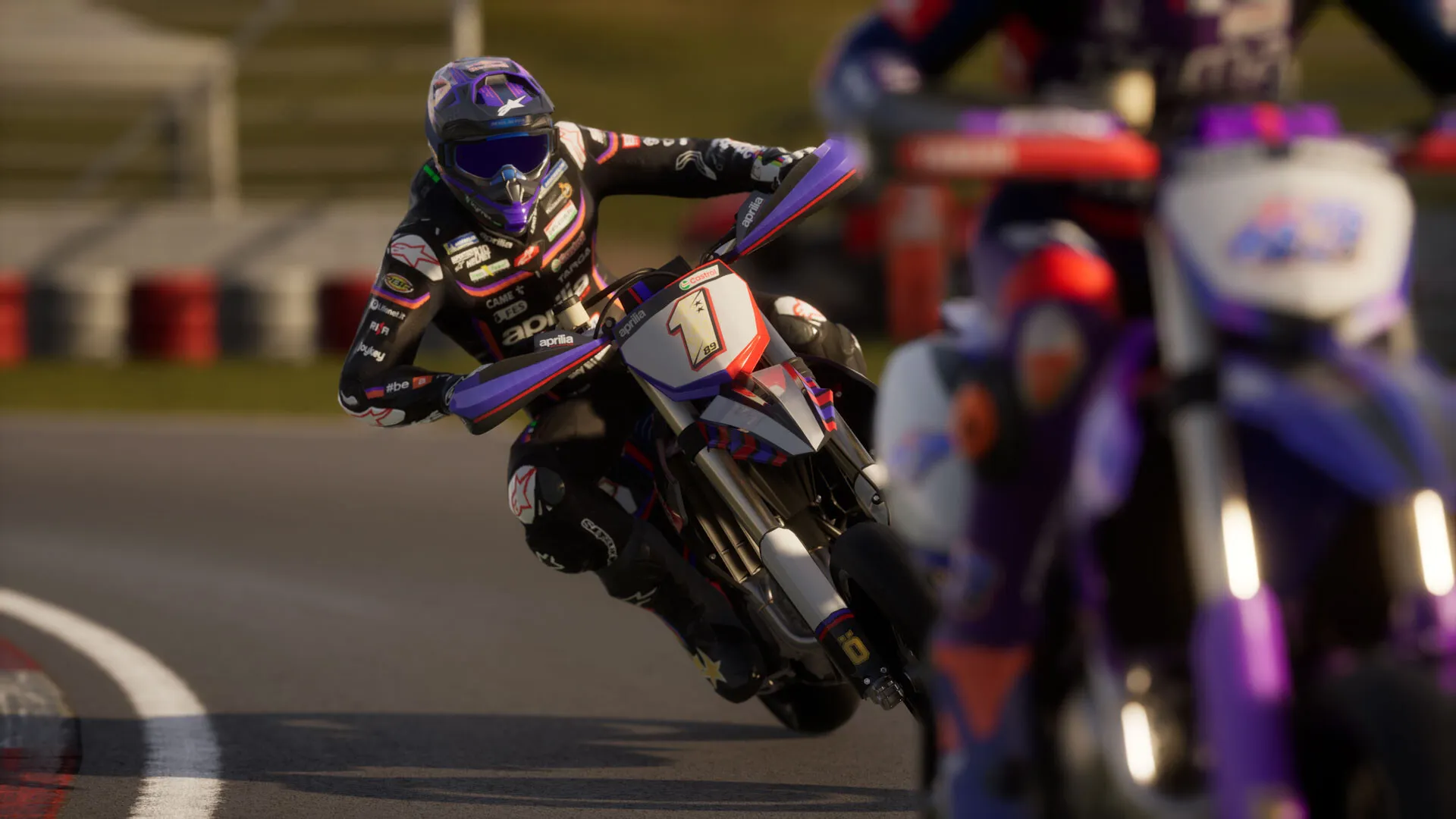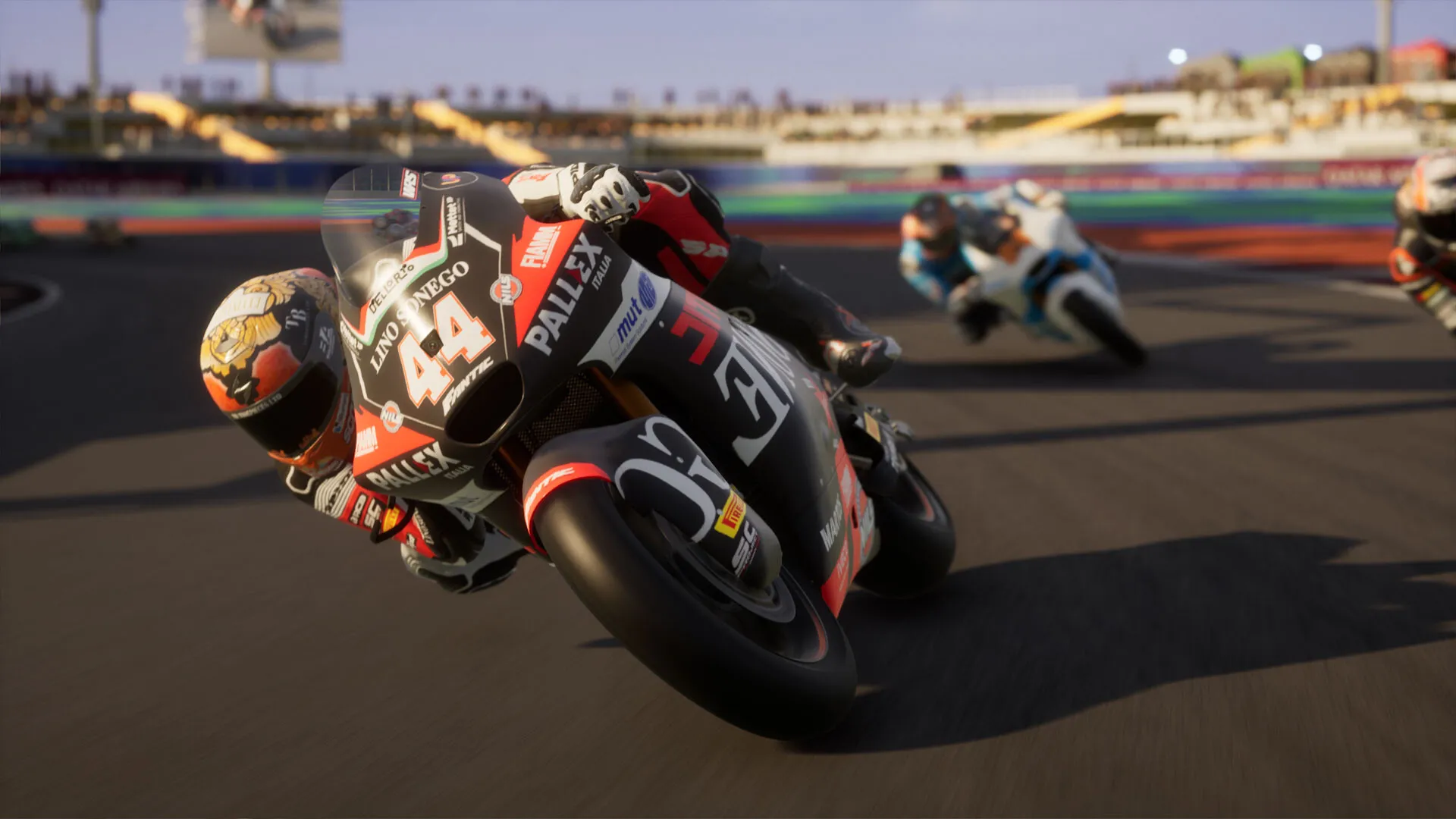MotoGP 25 stakes its claim among annual racing releases by pairing authentic bike handling with an evolving career narrative. Milestone’s decade-plus work on the series receives a facelift thanks to Unreal Engine 5, which subtly enhances environments and bike models without sacrificing the steady frame rate riders demand.
Two distinct handling styles define the core experience. Arcade mode streamlines input through adjustable neural assists, letting newcomers master apexes and throttle control without wrestling physics. Pro mode mirrors real-world telemetry—wheelies, lean-angle shifts, tyre-temperature management—so seasoned players can push the limits on every corner.
Beyond raw lap times, Career Mode weaves player decisions into a living championship. Branching “Turning Points” send your rider toward rival-specific contracts or manufacturer development paths, while social media interactions shape sponsorship offers and team morale. In-race test sessions and post-race debriefs let you invest development points into aerodynamics or engine torque, turning each podium finish into strategic momentum.
Tension arises when these systems collide: nail a qualifying lap but choose the wrong upgrade, then watch rivals overtake you on the straight. MotoGP 25 challenges both reflexes and reasoning—every choice on and off the track carries impact, and the mechanics and narrative feel truly intertwined.
Controls, Physics & Handling
MotoGP 25’s Arcade mode strips back complexity with a streamlined physics core and Neural Assist toggles for throttle, braking, and lean angle. Think of it like an indie platformer’s assist mode—Celeste’s “Assist” slider, for example—where players can dial down friction and air control to focus on rhythm over realism. Here, newcomers bypass wheelie woes and tyre-breakup anxiety, discovering line discipline and braking points without steep technical ramp-up.
Flip the switch, and you enter Pro mode, a simulation-grade sandbox where each ride mimics real-world telemetry: exaggerated lift under hard throttle, nuanced fuel burn, and suspension feedback. Compared to MotoGP 24, engine response feels more organic, and front-end lift management has tighter thresholds. Veterans accustomed to Forza Motorsport’s tuning panels will appreciate the depth—every tweak to chassis stiffness or electronic mapping yields quantifiable shifts in handling.
Front-end stability sees a clear upgrade: sudden wheelies no longer hurl you skyward as often. Instead, you feel back-pressure on the handlebars, signaling when to gently feather the throttle. It’s akin to the measured kickback in a well-tuned RPG’s hit feedback—rewarding the player every time they judge power application correctly.
Tyre temperature and wear are tracked in real time, displayed with subtle HUD cues rather than cryptic stat bars. Grip curves tighten in dirty air, punishing tailgating much like a stealth game penalizes noise discipline. Learning to manage heat zones becomes an exploration of track microclimates, not unlike navigating shifting weather in an open-world RPG.
The three dirt disciplines—Motard, Flat Track, Minimotos—each boast unique physics kernels. Motards feel looser in rear traction, Flat Track emphasizes sliding precision, and Minimotos demand razor-sharp throttle inputs. It’s reminiscent of class systems in RPGs: you wouldn’t wield a mage’s staff and a knight’s sword the same way, and here you master each bike on its own terms.
Built on neural networks, this assistance scales inputs dynamically. It reads player errors and adjusts braking curves or lean sensitivity on-the-fly, echoing dynamic difficulty found in some roguelikes that amp enemy AI to match player skill.
By monitoring lap consistency, MotoGP 25 nudges AI competitiveness up or down. While this keeps races tight—no runaway leaders or crushing defeats—occasional rubber-banding can feel arbitrary, reminding us that even the smartest systems sometimes need manual tuning.
Crafting a Champion: Choices on and off the Track
MotoGP 25’s Career Mode feels less like a menu of races and more like an evolving narrative RPG, where each decision carves your path through the paddock. “Turning Points” scatter key crossroads across the season: do you side with a rival to secure a factory offer, or remain loyal to your underdog team for bigger future gains?
These moments echo dialogue trees in story-driven indies—your choice unlocks different sponsor perks, team morale shifts, and grid positions. Between races, social media prompts ask you to respond with wit, aggression, or diplomacy, filling gauges that determine a manager’s trust or a rival’s grudges. It’s gratifying to see a well-timed tweet boost fan support, yet misreading tone can cost you bonus development points or team chemistry.
Right off the grid, you can leap into MotoGP with a top-tier ride or earn your stripes in Moto3 and Moto2. Jumping in early offers immediate hardware advantages but traps you under steamrolling expectations—like choosing a high-level class in an RPG before leveling up stats.
Negotiations for mid-season transfers feel surprisingly alive: backing out on a deal paints you as unreliable, while snatching a contract from a rival estimates their AI response in upcoming races. There’s room for emerging indie-style gambits, such as starting with a new privateer squad and shaping its legacy over multiple seasons.
After each race, engineers present growth graphs for electronics, aerodynamics, frame rigidity, and engine power. You rank their concerns—prioritizing a torque curve tweak over a minor chassis upgrade can mean the difference between a podium and a mid-pack finish. Tracking these stats against rival teams’ progress feels like managing gear upgrades in a crafting-heavy RPG: each allocation decision ripples through subsequent performance.
MotoGP 25 lets you tailor your calendar: full weekend blocks with sprint races mirror a full-scale campaign, while condensed events suit gamers who drop in for quick sessions. Test sessions grant two setup slots per track, forcing you to balance wet-weather brakes against dry-line aerodynamics. Those trade-offs often reveal their impact halfway through a Grand Prix, underscoring the weight of every mechanical tweak and scheduling choice.
Beyond the Grand Prix: Training and Side Events
MotoGP Academy feels like a finely tuned tutorial suite in an indie RPG, guiding you through each corner like mastering combat combos. The Circuit Experience breaks tracks into bite-sized segments with clear target times, so you internalize braking markers and apex points without guesswork. Skill Challenges then layer on precision drills—lean-angle control under timed conditions and throttle-brake coordination exercises—that reward consistency much like combat trials in games such as Celeste or Hyper Light Drifter.
Branching out from the tarmac, the Alternative Disciplines—Minibikes, Motards, Flat Trackers—offer four dedicated dirt circuits with their own physics kernels. Tight rear-end slides on Flat Track demand quick throttle taps, while Motard races emphasize controlled drifts around chicanes. Race Off Mode channels the spirit of the Doctor’s Ranch with free-for-all scrambles: four riders, loose surfaces, and minimal rules, creating chaotic skirmishes that echo battle arenas in top-down indie titles.
For riders craving classic formats, Time Attack and Custom Championships let you carve solo leaderboards or tailor multi-race series to your playstyle. Local play returns via Split-Screen, so you can settle rivalries couch-side without networking hoops—an old-school pleasure reminiscent of arcade racers. Each of these modes folds neatly into the MotoGP 25 package, offering both structured learning and spontaneous fun for a broad range of riders.
Sound and Vision: Crafting Race Day Atmosphere
MotoGP 25 uses Unreal Engine 5 to ground every twist and turn in believable detail. Lumen lighting bathes tracks in dynamic shadows, so sunrise textures along Brno’s Dragster chicane feel as urgent as a timed cutscene in an RPG. Rider faces carry subtle expressions—furrowed brows on a late-braking maneuver—that echo the emotional beats you’d find in narrative indies. Asset consistency holds up across environments: grandstands brim with animated spectators, pit equipment gleams under spotlights, and the return of Brno is rendered with circuit-accurate runoff zones and historic signage.
On PlayStation and Xbox, the game locks at a smooth 60 fps, while the Switch version smartly scales draw distance and shader details to preserve 30 fps stability. Quick-loading transitions whisk you from garage setups to grid starts almost instantly, mirroring the fluid scene swaps in choice-driven adventures. Menu layouts feel intuitive: proximity indicators pop up with clear icons, and a one-handed play option—akin to accessibility toggles in indie narratives—allows casual drop-ins without hunting through deep submenus.
Audio design ties mechanics to emotion. Engine recordings captured on-site produce distinct V4 and inline-4 timbres: the Ducati’s guttural roar contrasts the Yamaha’s buzzing hum, letting you sense manufacturer strengths before the first corner. Ambient tracks and UI cues—heroic riffs at race launch, tension-building silence during penalty waits—shape each moment’s mood. Commentary gaps on the final lap heighten focus, while helmet-cam wind noise swells when you lean hard into corners, pointing to how sound can convey risk and reward as powerfully as any in-game decision.
Together on the Grid: Social Racing Dynamics
MotoGP 25’s online suite turns every race into a living community event. Cross-play matchmaking unites PS5, Xbox, and PC riders into shared lobbies, shrinking wait times and ensuring you’ll find opponents at your skill level—though Switch users remain in their own pool. This platform-agnostic design mirrors the seamless coop in indie hits like Stardew Valley, where friends drop in without friction.
LiveGP Championships inject a rhythm to the season with monthly challenges and leaderboards. Whether you’re hunting ranked-race glory or chasing trophy events, the rotating schedule invites return visits much like limited-time quests in RPGs. Lobby systems let you create private races or join public rooms in seconds, so you can test setups against familiar rivals or scale up to open competition.
As racers earn kudos, customization sharing becomes part of the narrative. Helmets, suit liveries, and podium emotes aren’t mere cosmetics—they signify reputations you’ve built. Copy a friend’s paint job or broadcast your own design; these visual tokens forge connections that linger long after the checkered flag.
Racing with Rivals: AI Strategy and Balance
MotoGP 25’s AI behaves like a fellow rider with a mind of its own—sometimes brilliantly strategic, other times erratic. At race starts, opponents bunch tightly, opening dramatic opportunities for swooping passes, yet restart procedures after multi-bike spills often feel abrupt, as if a narrative thread unravels before resuming mid-action.
During overtaking, AI can nail late-braking undercuts that resemble intelligence-driven ambushes in tactical RPGs. However, contact frequency spikes unpredictably, creating chaotic scrambles rather than consistent rivalries. These skirmishes deliver narrative tension—one moment you’re defending a lead, the next you’re resetting after a tumble.
Imperfections emerge when yellow-flag durations reset riders instantly, stripping away realism akin to a checkpoint warp in an indie platformer. Collision handling sometimes lacks weight, and wheel-to-wheel duels can blur into overlap.
Finally, adaptive difficulty and Neural Assist tuning shape AI responsiveness: crank them up for punishing consistency, or dial them back for a forgiving chase. How you balance these settings becomes its own story—one of risk versus reward on every lap.
The Review
MotoGP 25
MotoGP 25 refines its mechanics with accessible and simulation modes, intertwines narrative career choices with meaningful consequences, and delivers strong technical presentation via Unreal Engine 5. While AI hiccups and limited side-track variety hold it back, its dual physics kernels, well-structured career progression, and striking visuals make for a strong annual entry.
PROS
- Both accessible Arcade mode and in-depth Pro simulation
- Career Mode with branching choices and meaningful consequences
- Enhanced bike physics: improved stability, tyre and suspension feedback
- Strong Unreal Engine 5 visuals, dynamic lighting, and detailed tracks
- Robust multiplayer with cross-play, LiveGP events, and customization sharing
CONS
- AI can be erratic at starts and during collisions
- Limited number of dirt-track disciplines and circuits
- Social media prompts occasionally feel superficial
- Commentary gaps reduce immersion in big moments





















































